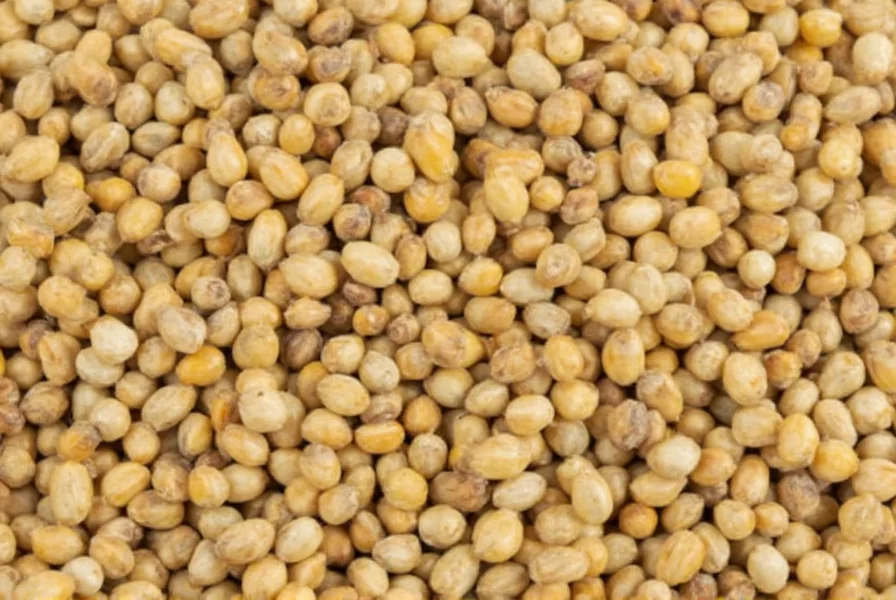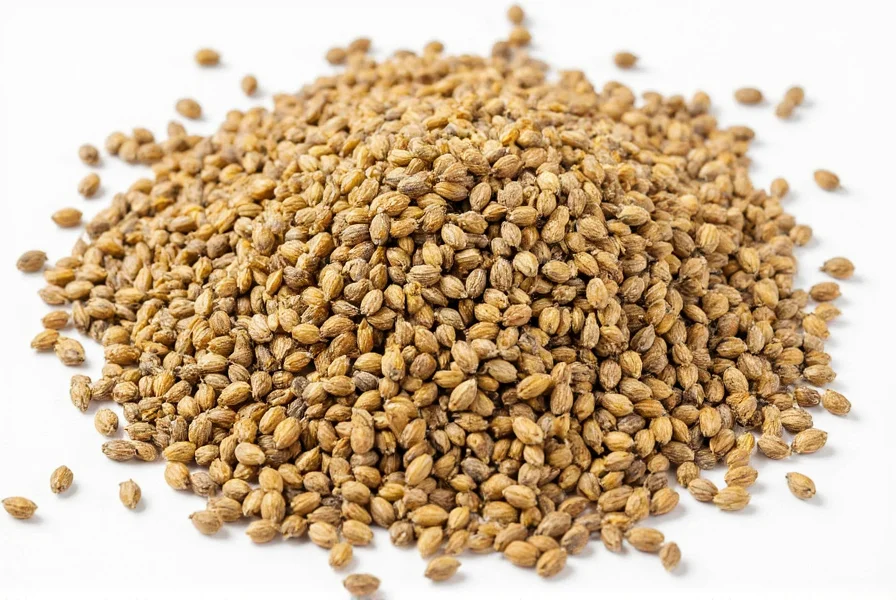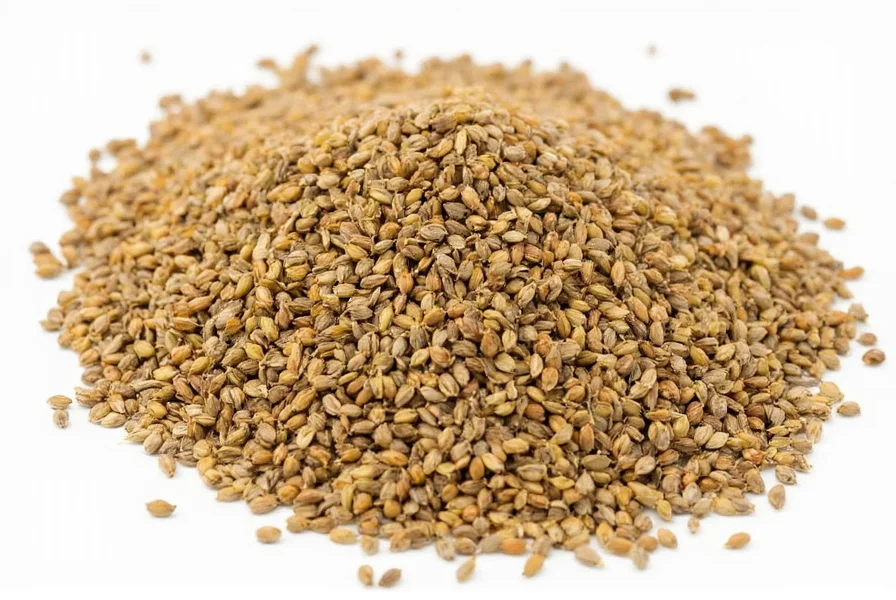Understanding what do coriander seeds taste like begins with recognizing their complex flavor profile that makes them indispensable in global cuisines. Unlike their fresh leaf counterpart cilantro (which some perceive as soapy due to genetic factors), coriander seeds offer a universally appealing warmth that forms the backbone of spice blends from Indian curries to Scandinavian breads.
The Distinct Flavor Profile of Coriander Seeds
When you bite into a raw coriander seed, you'll immediately notice its bright lemon-citrus top note—a characteristic derived from linalool, the same compound found in lavender and basil. This citrus element quickly gives way to warm, nutty undertones with a hint of sage-like earthiness. The finish carries subtle floral notes and a very mild peppery warmth that never overwhelms.
Professional chefs describe coriander seed flavor as "a bridge between sweet and savory" because it contains both citrusy brightness and earthy depth. This duality explains why how would coriander seeds taste in different culinary applications varies significantly based on preparation method.
Raw vs. Toasted: How Preparation Changes Flavor
The transformation coriander seeds undergo when toasted reveals why understanding what coriander seeds taste like when roasted matters for cooking:
| Preparation Method | Flavor Characteristics | Culinary Best Uses |
|---|---|---|
| Raw seeds | Bright citrus, subtle sweetness, mild earthiness | Pickling brines, cold spice rubs, fresh chutneys |
| Dry-toasted | Enhanced nuttiness, deeper warmth, caramelized notes | Curry powders, spice blends, roasted vegetable dishes |
| Oil-toasted | Floral notes amplified, citrus becomes rounded | Tempering for dals, finishing oils, marinades |
Food scientists confirm that dry toasting coriander seeds at 350°F for 2-3 minutes increases volatile oil concentration by up to 40%, intensifying both citrus and warm notes. This explains why why do toasted coriander seeds taste different from raw is such a common culinary question.

Coriander Seeds vs. Cilantro Leaves: Resolving the Taste Confusion
One of the most frequent points of confusion involves what do coriander seeds taste like compared to cilantro. Despite coming from the same plant (Coriandrum sativum), they offer dramatically different flavor experiences:
- Coriander seeds: Warm, citrusy, earthy, universally palatable
- Cilantro leaves: Bright, grassy, with polarizing soapy notes (for 21% of population with OR6A2 gene)
This genetic variation explains why some people find coriander seeds taste completely different from cilantro. The seed's linalool concentration (60-70% of essential oil) creates consistent citrus warmth, while cilantro's aldehyde compounds trigger soap perception in certain individuals.
Global Culinary Applications Showcasing Coriander Seed Flavor
The reason what coriander seeds taste like in Indian cuisine differs from Middle Eastern lies in preparation techniques and complementary spices:
- Indian cooking: Often dry-roasted with cumin then ground into curry powders where its citrus cuts through rich sauces
- Middle Eastern dishes: Typically used raw in za'atar blends where its brightness complements sumac's tartness
- European baking: Whole seeds in rye bread where slow toasting during baking releases subtle warmth
When exploring how coriander seeds taste in different cultural contexts, note that Mexican cooks often toast them with dried chilies for mole, while Scandinavian bakers incorporate them into pickling spices for herring—each application highlighting different flavor dimensions.
Maximizing Flavor: Storage and Usage Tips
To preserve the distinctive taste profile that answers what do fresh coriander seeds taste like, follow these evidence-based recommendations:
- Store whole seeds in airtight containers away from light (they retain flavor for 12-18 months vs. 6 months for ground)
- Grind seeds immediately before use—pre-ground coriander loses 60% of volatile oils within 30 days
- For maximum citrus notes, add ground coriander late in cooking; for deeper warmth, add early

Common Misconceptions About Coriander Seed Flavor
Several myths persist about what coriander seeds taste profile actually contains:
- Myth: Coriander seeds taste like cumin
- Fact: While both are warm, cumin has smoky bitterness while coriander offers citrus sweetness
- Myth: Coriander seeds taste identical to cilantro
- Fact: They share some chemical compounds but create completely different sensory experiences
- Myth: Older seeds just taste milder
- Fact: Stale seeds develop rancid, cardboard-like off-flavors due to oxidized fatty acids
Understanding these distinctions helps explain why professional chefs emphasize how to identify quality coriander seeds by taste—fresh seeds should deliver an immediate citrus burst followed by warm complexity, never mustiness or flatness.
Conclusion: The Versatile Flavor Powerhouse
Coriander seeds' unique combination of citrus brightness and earthy warmth makes them one of the most versatile spices in the pantry. Whether you're exploring what coriander seeds taste like in vegetarian dishes or how they enhance meat rubs, their ability to bridge sweet and savory applications remains unmatched. By understanding their flavor chemistry and proper usage techniques, home cooks can unlock the full potential of this ancient spice that has flavored human cuisine for over 7,000 years.
Frequently Asked Questions
Do coriander seeds taste like lemon?
Coriander seeds have a distinct citrus note reminiscent of lemon peel rather than juice—bright and fragrant with subtle floral undertones, but without lemon's acidity. This citrus characteristic comes from linalool, the same compound found in lemon grass and orange blossoms.
Why do coriander seeds taste different from cilantro leaves?
Despite coming from the same plant, coriander seeds and cilantro leaves contain different chemical compounds. Seeds are rich in linalool (60-70% of essential oil) creating warm citrus notes, while leaves contain aldehydes that many perceive as soapy due to genetic factors (OR6A2 gene present in 21% of population).
How can you tell if coriander seeds have gone bad?
Fresh coriander seeds should have a bright citrus aroma and deliver immediate flavor when bitten. Stale seeds develop a musty, cardboard-like smell and taste flat or slightly rancid due to oxidized fatty acids. Properly stored whole seeds maintain quality for 12-18 months, while ground coriander loses 60% of volatile oils within 30 days.
Do coriander seeds taste spicy or hot?
No, coriander seeds don't produce heat like chili peppers. They offer a very mild warmth (sometimes described as peppery) that builds gradually without burning sensation. This subtle warmth comes from terpenes in the essential oil, making them suitable for dishes where gentle flavor enhancement is desired without actual spiciness.
What foods pair well with coriander seed flavor?
Coriander seeds complement citrus fruits, root vegetables, legumes, and fatty fish particularly well. Their citrus notes cut through rich sauces, while earthy undertones enhance roasted vegetables. They pair beautifully with cumin (in balanced ratios), turmeric, and ginger in spice blends, and work surprisingly well with sweet applications like apple pie or citrus desserts where their floral notes shine.











 浙公网安备
33010002000092号
浙公网安备
33010002000092号 浙B2-20120091-4
浙B2-20120091-4